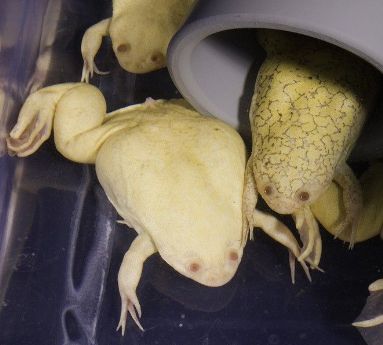The most up-to-date data currently available on the use of animals in research and testing in the European Union (EU), and Norway, was published by the European Commission on 15 July 2022. This information is important for openness and transparency and can also help to focus 3Rs efforts more effectively. Below is a summary of the data, which is for 2019, setting out the number of animals reported to have experienced ‘severe’ suffering, and in which areas of science.
As in previous years, the mouse is the species most likely to experience ‘severe’ suffering, and batch potency testing of vaccines and other substances (such as botulinum toxin) is the category responsible for the largest proportion of ‘severe’ animal uses.
But on a positive note, the number of ‘severe’ animal uses fell by 65,661 in comparison with the 2018 data. This means that the percentage of ‘severe’ uses decreased from 10% to 9%, which is a small step in the right direction.
999,264 uses of animals (9% of the total) were reported as causing ‘severe’ pain, suffering, distress or lasting harm. This included:
- 344,582 in basic research (7.2% of all uses for basic research involved severe suffering)
- 310,367 in applied research (10.9% of all uses for applied research involved severe suffering)
- 291,166 for regulatory purposes (12.2% of all uses for ‘regulatory’ purposes involved severe suffering)
Main categories of use causing severe suffering
- 215,735 – Batch potency testing (represents 21.6% of all uses of animals that were ‘severe’)
- 132,695 – Studies of animal diseases and disorders (represents 13.3% of all uses of animals that were ‘severe’)
- 104,164 – Nervous system (represents 10.4% of all uses of animals that were ‘severe’)
- 77,654 – Immune system (represents 7.8% of all uses of animals that were ‘severe’)
- 52,574 – Oncology (represents 5.3% of all uses of animals that were ‘severe’)
Which types of use were most likely to be severe?
The production of monoclonal antibodies by the ascites method was the most likely to cause ‘severe’ suffering – 91% of all uses for monoclonal antibody production using this method were severe. The ascites method was still being used in six Member States; principally in France, which accounted for around 36,000 out of 37,477 uses in this category. Note – alternative approaches are available to replace the mouse ascites method, and this method has not been used in the UK since 2012.
Severe suffering was reported in 39% of animals used for acute toxicity studies in ecotoxicity, and in 29% of animals used in LD50 and LC50 tests for acute and sub-acute toxicity testing.
Which animals experienced the most ‘severe’ suffering?
- 647,525 – Mice (11.7% of all mouse use was severe)
- 201,100 – Fishes other than zebrafish (9.8% of all use of fishes was severe)
- 64,070 – Rats
- 25,094 – Zebrafish
- 18,273 – Domestic fowl
- 16,127 – Guinea pigs (12.9% of all guinea pig use was severe)
- 7,382 – Xenopus (27.8% of all Xenopus use was severe)
- 6,336 – Rabbits
5,253 uses of animals for the creation of new genetically altered lines (1% of uses in this category) and 50,018 uses of animals for the maintenance of established lines of genetically altered animals (7.06% of uses in this category) were categorised as ‘severe’.
If you’d like to look at the EU data in more detail, see the Commission’s ALURES database.
